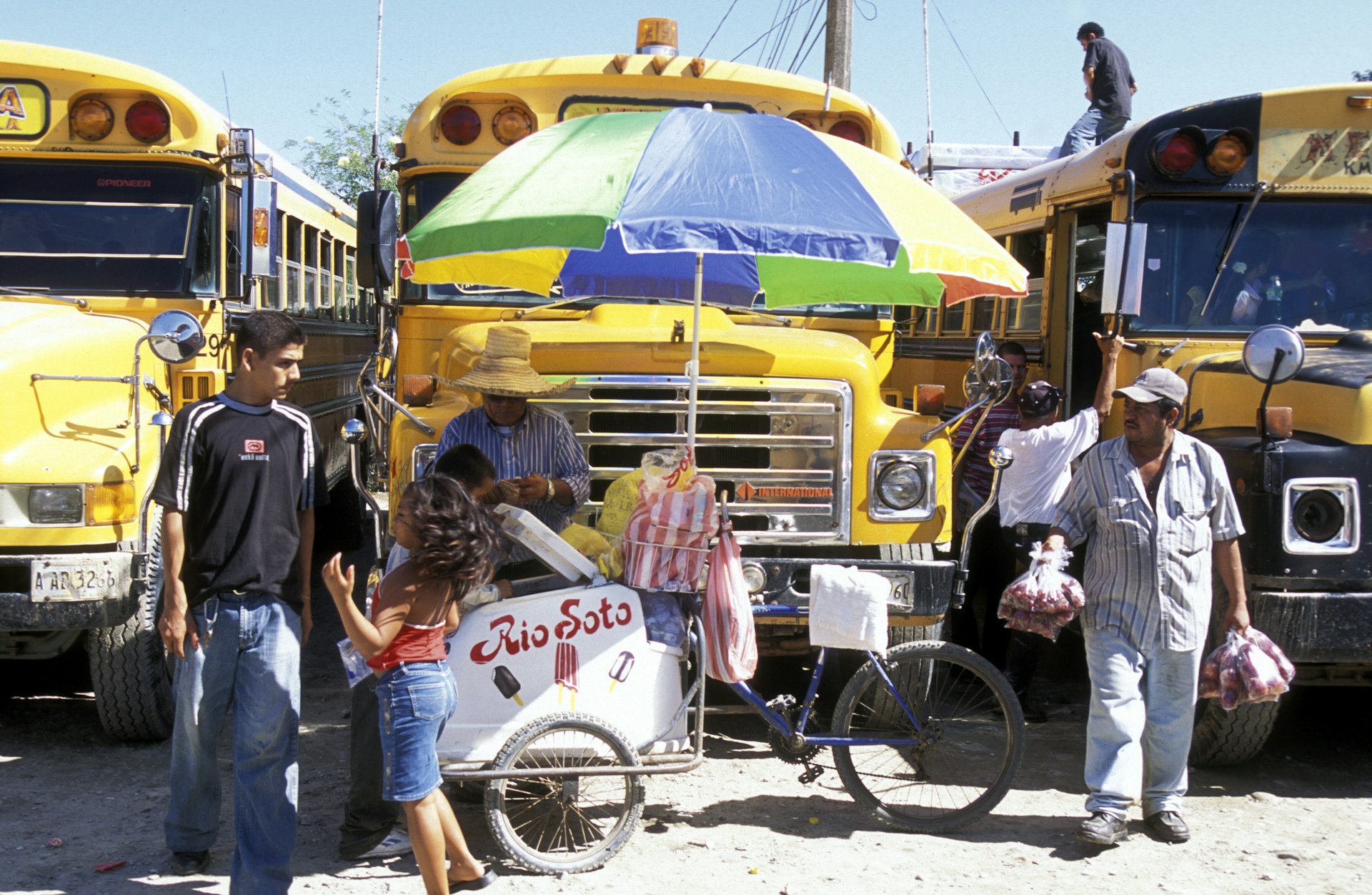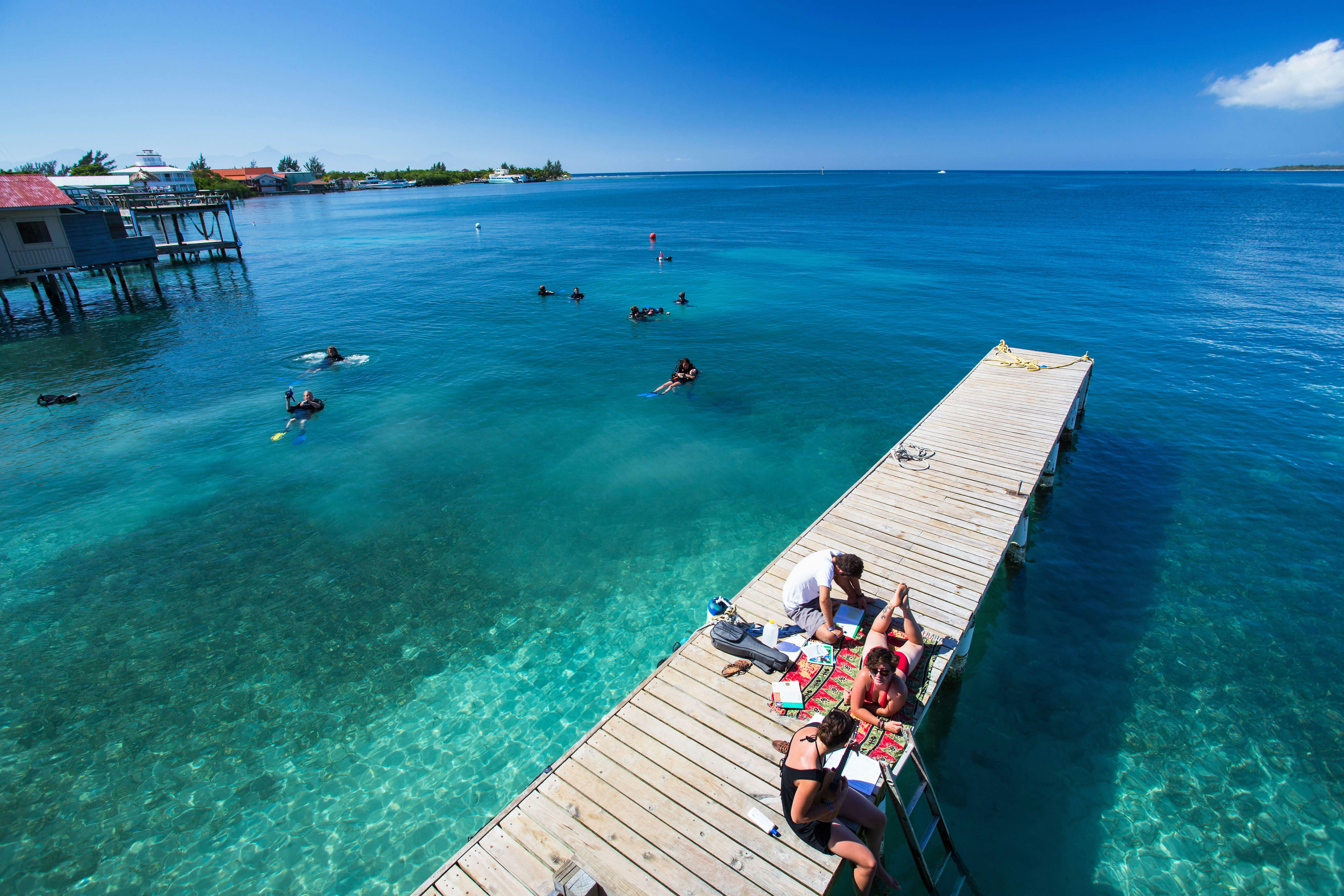Wonderfully intact Maya ruins and a remote biosphere reserve where you can still genuinely go off the grid are just two of many attractions in Honduras.
This under-the-radar country is a top pick for budget travelers, whether you’re just passing through as part of an epic road trip, taking a week-long beach vacation or going around the world on a gap year.
Honduras is already one of the most wallet-friendly destinations in Central America, but there are plenty of ways to minimize costs so you can splurge on once-in-a-lifetime experiences like diving with whale sharks or white-water rafting on the Río Cangrejal.
Daily costs in Honduras
- A bed in a hostel dorm: L170–370 (US$7–15)
- A basic room for two: L370–618 (US$15–25)
- Bus ticket on a local bus: L6–247 (US$0.25–10)
- Dinner for two in a local restaurant: L172–445 (US$7–18)
- A bottle of local beer: L21–75 (US$0.85–3)
- A cup of coffee: from L19 (US$0.75)
1. Bunk in a hostel or stay with local families to save on accommodations
With a surge of hostels in popular haunts such as Santa Rosa de Copán, Roatán and Utila, and private rooms in budget hotels elsewhere, there’s always somewhere inexpensive to lodge in Honduras.
And it’s often possible to negotiate a better rate for longer stays. Another option is staying with locals, combing cultural immersion with three home-cooked meals a day – find homestays advertised in tourist hangouts.
2. No bed? No problem, use a hammock instead!
Several hostels on Roatán, Utila and in a few inland destinations offer hammocks strung across verandas – or have hooks for you to sling your own – for a low-cost stop for the night. A durable, comfy hammock will set you back around L370 at a local market.
Hammock space is around L125 per night – not only is this the most wallet friendly of accommodations, it’s incredibly eco-friendly as well. Who needs air-conditioning or a fan as you’re lulled to sleep by the sea breezes and the sound of the waves or jungle noises? Bug repellent is a must, though, lest you become a mosquito buffet.
3. Carry local currency to maximize the chances to save
Using cash is usually the best way to go, particularly if you’re staying at low-cost places. Credit cards only tend to be used for high-end purchases such as booking a flight or a stay at an upscale hotel. ATMs are not always easy to find in smaller towns, and where they do exist, they occasionally don’t work.
US dollars are welcome in Honduras, but exchange rates can vary dramatically, so it’s best to withdraw a wad of lempiras (the local currency) from an ATM at the earliest opportunity and carry plenty of small bills for minor purchases and bus fares.
4. Avoid high season to dodge higher prices in Honduras
Honduras is a year-round destination thanks to its warm, subtropical climate, but the hot, dry season (December to May) is the most popular time to visit. Accommodation prices spike around New Year and Easter, so consider traveling during the rainy season (June to November) to avoid the crowds in popular spots.
You can also bag off-season bargains on accommodations, tours and scuba diving packages on the Bay Islands. So long as you avoid the rainiest months of September and October, you may only experience the tropical downpours as short afternoon bursts and you’ll be able to plan around these.

5. Skip the domestic flights and hop on a bus (or ferry) to cut costs
The cost of domestic flights in Honduras can really add up (though if you’re short on time, they can be your best option). Luckily, there are also frequent and inexpensive ferries to the Bay Islands from several coastal towns.
A ferry ticket from La Ceiba to Roatán costs around L685, while a direct flight will set you back at least L1,484. Inland, so-called “chicken buses” (repurposed North American school buses) are by far the most cost-effective form of transport if you don’t mind being squeezed in with assorted luggage and crowds of passengers.
Luxury, air-conditioned long-distance buses, such as those run by Hedman Alas and Viana Transportes, are a step up comfort-wise and will still save you plenty of money compared to flights. The 4½-hour bus journey from Tegucigalpa to San Pedro Sula costs L643 in a luxury bus, compared to L3,215 for a 45-minute direct flight.
Cross-border shuttles, such as the daily run from Santa Rosa de Copán to Antigua, Guatemala, are extremely affordable, convenient and much cheaper than taking a cross-border flight.

6. Take your scuba diving course in the Bay Islands for bargain prices
Planning to take that Open Water scuba diving course as part of your trip? Well, you’re in luck. Not only does Honduras sit adjacent to the world’s second-largest barrier reef, but two of its islands – Roatán and Utila – are among the best and cheapest places on the planet to take to the deep blue sea. On average, a four-day PADI course will set you back around L7,420.
As for accommodations, tiny Utila is less developed and generally cheaper than Roatán, but with the growth of diving outfits in Roatán’s West Bay and West End, if you ask around, you might get a decent accommodation package thrown in with your diving course.
As an added bonus, if you dive between March and May, you may well find yourself swimming with whale sharks – one of the great marvels of the ocean.
7. Filter tap water instead of buying bottled water
Ever since Hurricane Mitch wreaked havoc with Honduras’ infrastructure in 1998, the local tap water has not been potable, though more upmarket hotels supply purified water and many restaurants use purified water in food preparation.
Many travelers buy bottled water, but since plastic pollution is a true scourge of the planet, it’s best to bring your own refillable bottle and fill it up with purified water, or opt for LifeStraw Go or GRAYL flasks, which come with their own in-built filtration systems that filter out most waterborne nasties.

8. Do your grocery shopping at local markets to cut dining costs
All Honduran towns have produce markets where you can stock up on staples such as rice and beans and fresh, seasonal produce such as cassava, squash, sweet potatoes, bananas, guavas, pineapples and more.
By opting to stay with locals or picking accommodation with kitchen facilities, you can rustle up nutritious meals without breaking the bank.
9. Skip restaurants in favor of low-cost street food
A terrific way to save money, and simultaneously explore some of Honduras’ best culinary offerings, is to acquaint yourself with street food carts.
Local specialties include baleadas (wheat-flour tortilla filled with cheese, avocado and beans – and sometimes beef as well), tacos topped with ground meat and cabbage, pastelitos del carne (meat pastries filled with ground beef cooked with wine, tomato, onion, sugar and raisins) and machuca (a Garifuna dish of mashed boiled plantains cooked with a jalapeño and garlic paste).
You may also encounter the local take on enchiladas and pupusas (El Salvadorean crispy corn tortillas topped with grilled pork, beans and cheese). Look out for the queues to see which street stalls are the most popular with locals.
10. Sip local brews instead of pricier imported brands
Opt for locally produced beverages instead of going for imported beers and soda. Local sodas with fun flavors include Refresco de Nance (nance being a common Honduran fruit) and banana-flavored Tropical.
Honduras’ national drink is pinol (ground maize mixed with cocoa, agave, honey, cinnamon and spices) – a pre-Columbian beverage resembling thin oatmeal, but much tastier!
Another ancient drink invented by the Mayans is atol de elote, a warm, sweet drink made of pureed maize with sugar, cinnamon and spices. If caffeine is a must-have, you’re in luck – Honduras grows exceptional coffee in the Agalta, Comayagua, Copán, El Paraiso, Montecillos and Opalaca regions. Top-notch coffee is easy to find wherever you go.
Look out for Honduras’ four main beer brands: Barena, Imperial, Port Royal and Salva Vida. Hop heads will be thrilled to learn that craft beer breweries have sprung up in recent years in Tegucigalpa, San Pedro Sula and Santa Rosa de Copán.
Local alcoholic beverages brewed since times immemorial include the fruit drinks chicha de nance, chicha de piña and chicha de coyol. If you’re looking for something stronger, try guifiti – a Garifuna firewater made from medicinal herbs and botanicals that can supposedly cure all that ails you.
